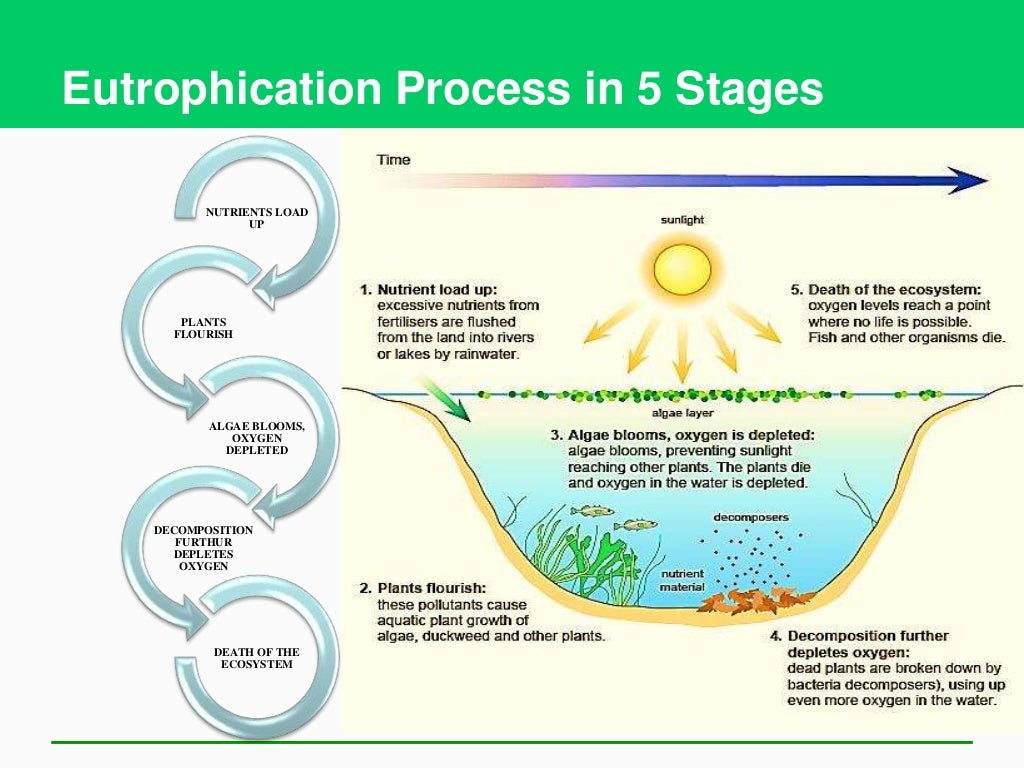Eutrophication
- The process of nutrient enrichment in water bodies is known as eutrophication.
- It proceeds over a period of thousands or tens of thousands of years, depending on the original size and depth of the lake, the amount of sediment imported and the amount of organic matter internally generated.
- The original state of a wetland and the rate at which at which it takes place depends on the location of the water body, its hydraulic character, and the attributes of its watershed including soils, slopes of terrain, and extent of vegetative cover.
- The addition of large amounts of phosphorus (in the form of the phosphate anion, PO 43- ) from a variety of man-made sources can cause accelerated eutrophication to occur in lakes within a few decades. This process is also known as cultural or artificial eutrophication.
Process of Eutrophication:

Eutrophication occurs in 4 simple steps:
1. EXCESS NUTRIENTS: First, farmers apply fertilizer to the soil. Then, excess nutrients run off from the field into the water.
2. ALGAE BLOOM: Next, the fertilizer rich in nitrate and phosphate spark the overgrowth of algae in water bodies.
3. OXYGEN DEPLETION: When algae forms, it blocks sunlight from entering water and uses up oxygen. Eventually, water becomes oxygen-depleted.
4. DEAD ZONES: Finally, water that is completely depleted of oxygen becomes a dead zone and can no longer support life.